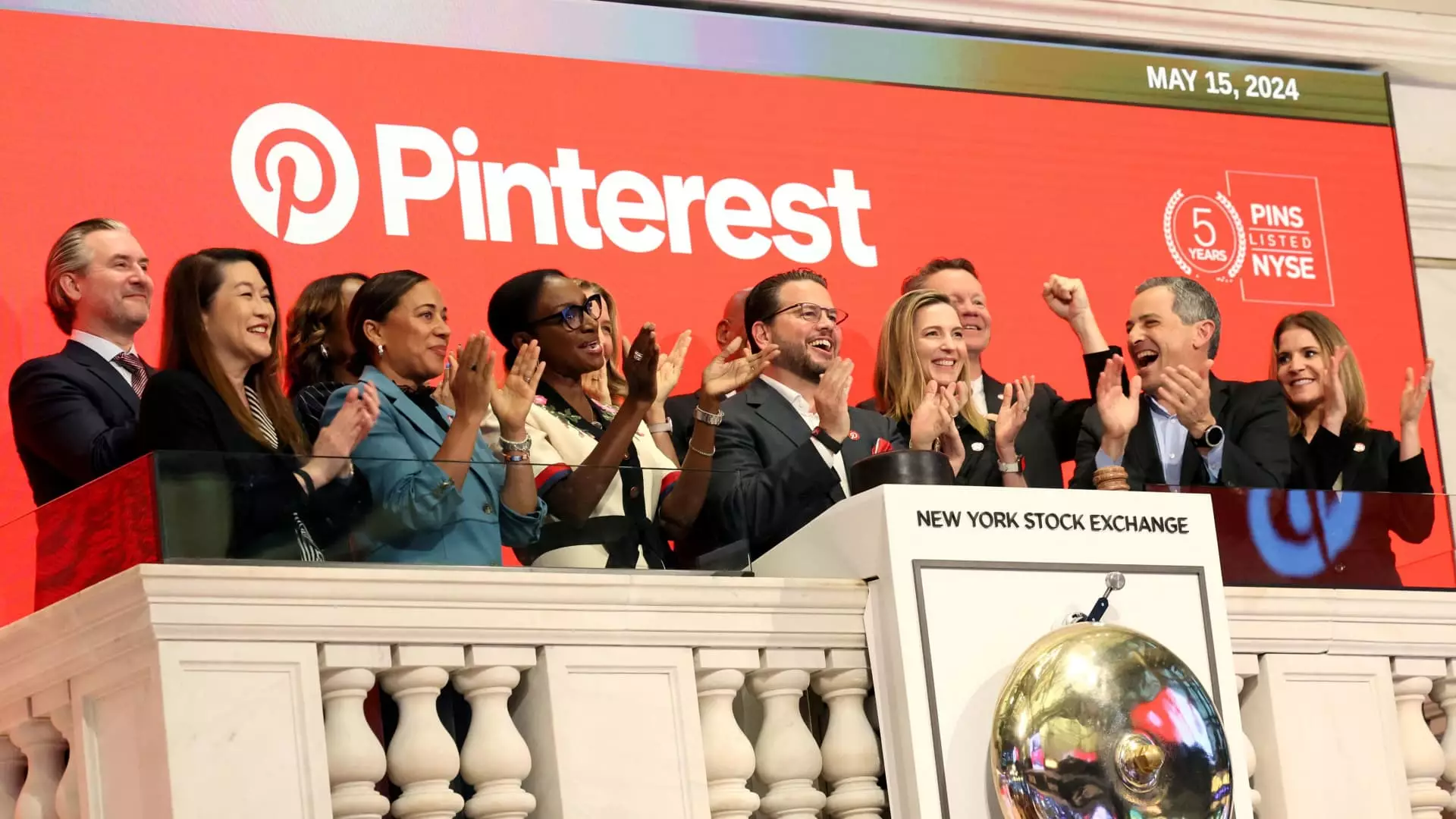Pinterest recently experienced a significant drop in its stock price, plunging as much as 15% after the announcement of its third-quarter earnings. While the social media giant managed to beat analyst expectations on both revenue and adjusted earnings per share, its guidance for the upcoming fourth quarter left much to be desired. The revenue forecast for the fourth quarter ranges between $1.125 billion and $1.145 billion, with the midpoint of $1.135 billion falling short of analyst estimates, which anticipated a figure of $1.143 billion. This discrepancy indicates an underlying concern among investors, as projected earnings often influence market sentiment more profoundly than past performance.
In the third quarter, Pinterest reported revenue of $898 million, surpassing expectations of $896 million. Correspondingly, the company’s adjusted earnings per share were recorded at 40 cents, exceeding the forecast of 34 cents. However, despite these figures, the stock’s decline signals that investors were more focused on future projections rather than positive past results.
One prominent reason for the conservative guidance relates to ongoing weaknesses among food and beverage advertisers, which are part of the broader consumer packaged goods market. CFO Julia Donnelly indicated that these issues are likely to persist into the fourth quarter, raising red flags for Pinterest’s overall sales trajectory. This revelation underscores how closely tied Pinterest’s financial health is to sector performance trends, particularly the advertising expenditure of key industries.
While the company did enjoy an impressive 18% year-over-year increase in sales, climbing from $763.2 million to $898 million, the underlying challenges in the advertising landscape suggest that the company may struggle to sustain growth in the coming months. The company’s performance contrasts with other tech giants like Amazon, Meta, and Alphabet, all of whom reported strong growth in their respective ad segments. This raises questions about Pinterest’s competitive edge in the rapidly evolving social media marketplace.
Another aspect worth noting is Pinterest’s rising expenses, which amounted to $904 million in the third quarter—up 17% year over year from $768 million. Donnelly attributed this increase to investments in research and development and the acquisition of talent specialized in artificial intelligence. Although investing in AI could pave the way toward future efficiencies and innovation, it also raises concerns about short-term financial stability. High operating costs can erode profit margins, particularly in a challenging economic environment where advertising budgets may be constrained.
Despite these challenges, Pinterest did post a net income that grew substantially by 354% year-over-year, reaching $30.56 million. Nonetheless, this increase may have been overshadowed by financial forecasts that suggested slower future revenue growth, contributing to the stock’s downturn.
The backdrop of these earnings releases included dynamics from the broader advertising market, especially with various tech companies reporting recent earnings. Notably, Meta and Alphabet reported strong advertising sales—even while Meta faced challenges with user growth and projected increased infrastructure costs for the upcoming year. This indicates a dichotomy within the industry; while digital advertising overall is growing, individual companies face unique challenges that influence their market valuations.
Another noteworthy report from Reddit indicated a significant 68% spike in sales, showcasing the varying fortunes among social media platforms. The market is becoming more fragmented, and companies must adapt rapidly to stay relevant and profitable.
The board’s approval of a $2 billion share buyback indicates management’s belief in the company’s value proposition amid current market volatility. However, the ongoing challenges faced by food and beverage advertisers may continue to cast a shadow over Pinterest’s financial health. As the company prepares for a potential slowdown in revenue growth, it must simultaneously leverage its investments in AI and enhance engagement strategies to counterbalance sector weaknesses.
While Pinterest has shown strong growth metrics in the recent past, the cautious future guidance and sector-specific challenges may pose challenges for the company ahead. Investors will likely keep a keen eye on how Pinterest adapts in an increasingly competitive landscape while navigating its unique hurdles.

